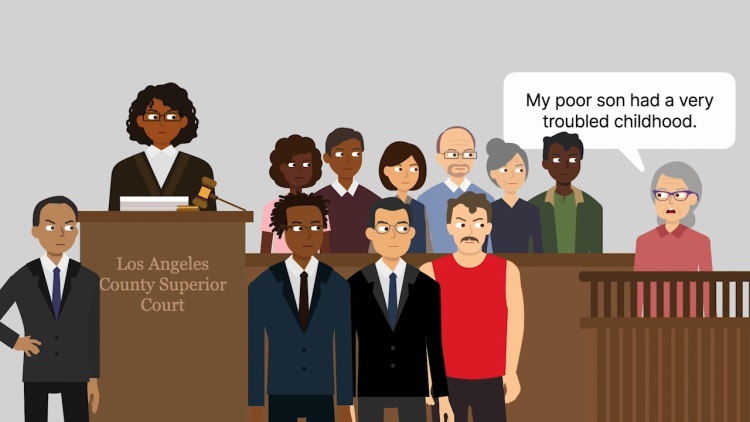Cullen v. Pinholster
United States Supreme Court
563 U.S. 170, 131 S.Ct. 1388, 179 L.Ed.2d 557 (2011)

- Written by Sara Rhee, JD
Facts
Scott Lynn Pinholster (defendant) and two accomplices attempted burglary and killed two men who caught them in the act. Harry Brainard and Wilbur Dettmar were appointed by the California trial court to defend Pinholster. Pinholster was convicted of first-degree murder. Prior to the penalty phase of the trial, Brainard and Dettmar sought to exclude introduction of aggravating evidence that would support the death penalty. They argued that the prosecution had not provided notice of the evidence to be introduced and that the defense counsel was therefore unprepared to mitigate such evidence. The court found that Pinholster had in fact received notice and denied the defense’s motion. During the penalty phase, the prosecution brought eight witnesses. The defense decided to employ a family-sympathy-mitigation defense and only produced Pinholster’s mother to try and garner sympathy from the jury. Although the defense had questioned a psychiatrist, Dr. John Stalberg, about Pinholster’s mental issues, they failed to produce a psychiatrist at the penalty phase. Pinholster was given the death penalty. The California Supreme Court affirmed. After three attempts, Pinholster was granted habeas relief by the Federal District Court on grounds that Pinholster had been denied effective counsel during the penalty phase of the trial. Specifically, Pinholster had argued that Brainard and Dettmar had failed to produce mitigating evidence regarding his mental disorders, and had submitted additional evidence to the District Court in support of his claims. The Court of Appeals for the Ninth Circuit affirmed the District Court’s decision. The State appealed on grounds that, under the Antiterrorism and Effective Death Penalty Act of 1996 (AEDPA), Pinholster should not have been allowed to present additional evidence not before the state court that adjudicated the claim on its merits.
Rule of Law
Issue
Holding and Reasoning (Thomas, J.)
Concurrence (Alito, J.)
Dissent (Sotomayor, J.)
What to do next…
Here's why 899,000 law students have relied on our case briefs:
- Written by law professors and practitioners, not other law students. 47,000 briefs, keyed to 994 casebooks. Top-notch customer support.
- The right amount of information, includes the facts, issues, rule of law, holding and reasoning, and any concurrences and dissents.
- Access in your classes, works on your mobile and tablet. Massive library of related video lessons and high quality multiple-choice questions.
- Easy to use, uniform format for every case brief. Written in plain English, not in legalese. Our briefs summarize and simplify; they don’t just repeat the court’s language.





